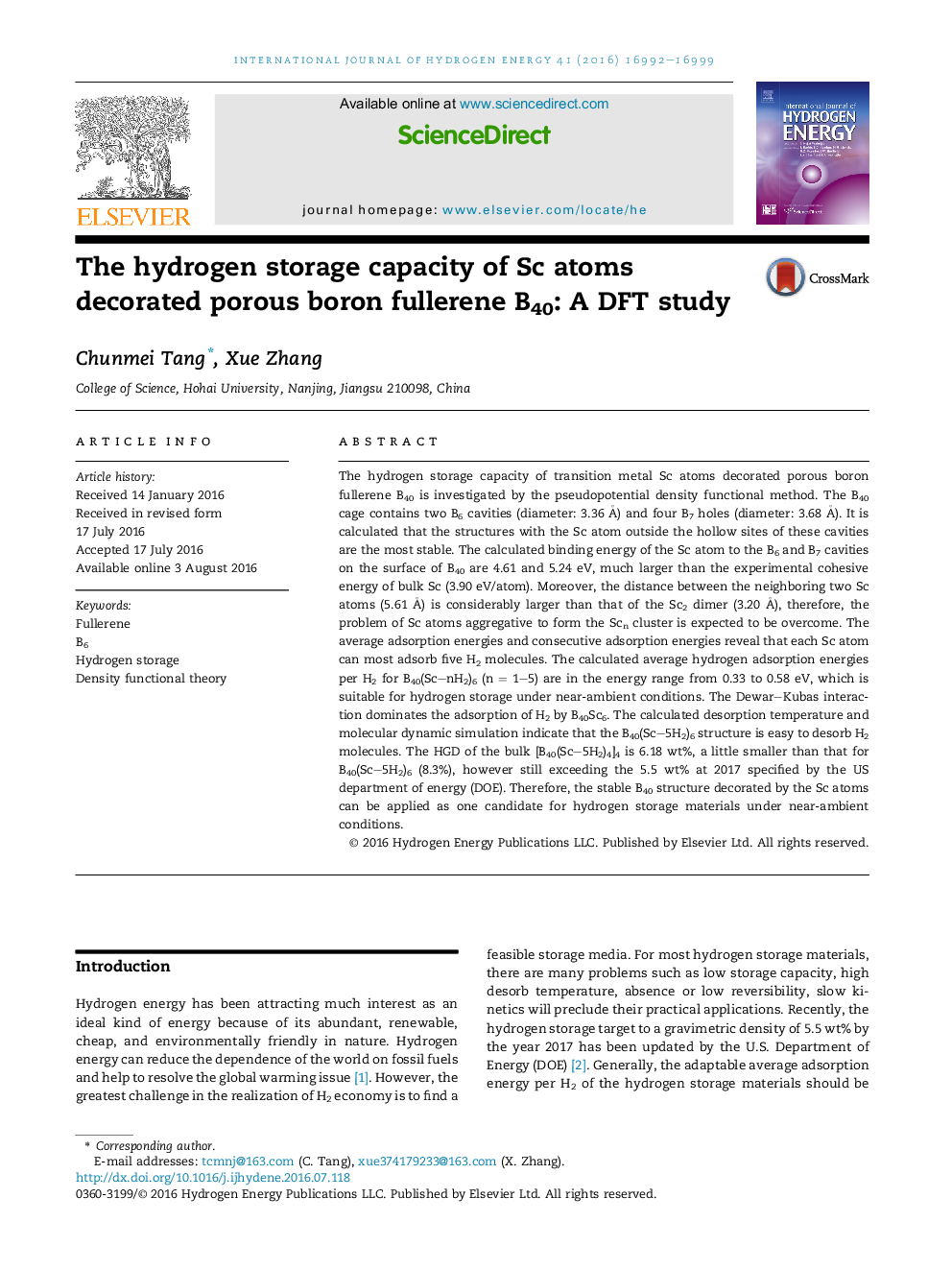| Article ID | Journal | Published Year | Pages | File Type |
|---|---|---|---|---|
| 5147708 | International Journal of Hydrogen Energy | 2016 | 8 Pages |
Abstract
The binding energy (Eb) of the Sc atom to the B6 and B7 rings of B40 is high to 4.61Â eV and 5.24Â eV respectively, which are much larger than the experimental cohesive energy of bulk Sc (3.90Â eV/atom) and that of the Sc atom binding on the surface of B80 (3.60Â eV), therefore, the problem of metal aggregative to form Scn cluster on the surface of B40 is expected to be overcome, and the Sc decorated B40Sc6 structure will be stable for designing a recyclable hydrogen material. The average adsorption energy and consecutive adsorption energy reveal that each Sc atom can adsorb five hydrogen molecules, inconsistent with that calculated by the 18-electron rule. Moreover, the calculated desorption temperature and molecular dynamic simulation indicate that the B40(Sc-5H2)6 structure is easy to desorb H2 molecules. The HGD of the bulk [B40(Sc-5H2)4]4 is 6.18Â wt%, a little smaller than that for B40(Sc-5H2)6 (8.3%), however still exceeding the 5.5Â wt% at 2017 specified by the US department of energy (DOE). Therefore, the stable B40Sc6 structure can be applied as one candidate for reversible hydrogen storage materials under near-ambient conditions.329
Related Topics
Physical Sciences and Engineering
Chemistry
Electrochemistry
Authors
Chunmei Tang, Xue Zhang,
